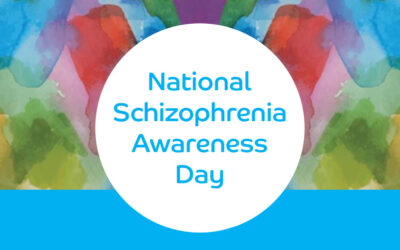Why Everyone Should Learn About Patient Safety
Written by Josh Bryning

What Exactly is Patient Safety?
Patient safety is defined as the avoidance of unintended or unexpected harm to people during the provision of health care (NHS, 2022). The idea was first pioneered by Florence Nightingale, who used charts and other figures such as graphs to show relationships between hygiene and patient outcomes. However, the first tangible leap forward in patient safety came in the 1900s when the American College of Surgeons (ACS) developed the first set of hospital standards, including on-site inspections. The set of standards was only one page long, although it paved the way for patient safety protocols and good clinical practice (Patient Safety Movement, 2022).
Since then, there have been numerous standards developed with patient safety in mind.
To raise awareness, the WHO have made the 17th of September “World Patient Safety Day” annually. The most recent iteration focused on improving diagnosis for patient safety with the slogan “Get it right, make it safe!” (WHO, 2024). Also, the Uppsala Monitoring Centre organises an annual “Med Safety Week” in November (this year is from 4th November – 10th November), where they team up with regulators across the globe to encourage side effect reporting (WHO, 2024). These occasions are organised to encourage everyone and anyone (although it certainly pertains to professionals in this field) to learn more about patient safety and how to improve standards in healthcare.
We celebrated World Patient Safety Day with our own “Pharmora Patient Safety Week” with our scientists taking part in a variety of medical reporting workshops and fun crosswords!
Why is Patient Safety Vital?
Educating people on healthcare safety is widely important to the benefit of all of us. Of course, a member of the public with no scientific background is not expected to know the ins and outs of patient safety. However, there are many safety reporting schemes patients can be involved with.
For example, in the UK the Yellow Card Scheme and the Black Triangle Scheme, both from the Medicines and Healthcare Products Regulatory Agency [MHRA]. In the US, there is the FDA Adverse Event Reporting System (FAERS). If more people were made aware of such schemes and were encouraged to use them, then the number of reported Adverse Drug Reactions (ADRs) for medications currently on the market would increase. This means more information available for regulatory agencies and manufacturers to analyse, increasing the chance of finding any new side effects or new information on established side effects. With this knowledge the manufacturer can provide additional information and guidance, potentially keeping more patients safe.
More on “The Yellow Card Scheme”
The Yellow Card Scheme was first implemented following the thalidomide tragedy, which showed the need for real-time and routine monitoring of the safety of medicines by a regulatory body (RDTC, 2022). The scheme is voluntary, meaning there is no obligation from the public to report the ADRs they experience. However, it is important to educate as many people as possible on the subject, as many lives can be saved and unnecessary ADRs can be prevented if there is more information on the side effects of a particular drug.
Moreover, patient safety is not just about the reporting of ADRs for drugs currently on the market. It also extends to the systems in which healthcare professionals operate. Designing systems and processes to minimise and mitigate risks from all directions is key. Pharmacovigilance focuses on risks from medicines but the prescribing environment is also a factor to take into consideration when mitigating risks.
If you would like to look at the Yellow Card Scheme or to report an ADR, please find it here
Alternatively, if you would like to learn more about FAERS or report an ADR, please find it here
Bibliography
NHS. (2022, November). Patlent Safety. Retrieved from NHS: https://www.england.nhs.uk/patient-safety/
Patient Safety Movement. (2022, November). Patlent Safety History. Retrieved from Patient Safety Movement: https://patientsafetymovement.org/patient-safety/historical-timeline/
RDTC. (2022, November). Yellow Card Scheme. Retrieved from Regional Drug and Therapeutics Centre: https://rdtc.nhs.uk/yellow-card/yellow-card-scheme/
WHO. (2019, November 26). Medicines safety week. Retrieved from WHO: https://www.who.int/news/item/26-11-2019-medicines-safety-week
WHO. (2022, September 17). World Patlent Safety Day 2022. Retrieved from WHO: https://www.who.int/news-room/events/detail/2022/09/17/default-calendar/world-patient-safety-day-2022
Read More Pharmora Blog Posts Below
National Schizophrenia Awareness Day – July 25th
National Schizophrenia Awareness Day, on July 25th, aims to reduce stigma and raise awareness about schizophrenia. Schizophrenia is a complex mental health condition characterised by symptoms such as hallucinations, delusions, and disorganised thinking. Held annually...
My Time at Pharmora (so far)
Learn what it’s like to be a part of the team at Pharmora, as Rhandel describes his first year at our organisation.
Conversations with Industry Leaders: Dr Sue Lim 1 April 2025
By Dr Stephanie-Jayne Jones
On 1st April I caught up with Dr Sue Lim in the latest in my series of “Conversations with Leaders in our Industry”. Dr Lim is an experienced former FDA director and licensed physician with around 2 decades of global drug development experience.


